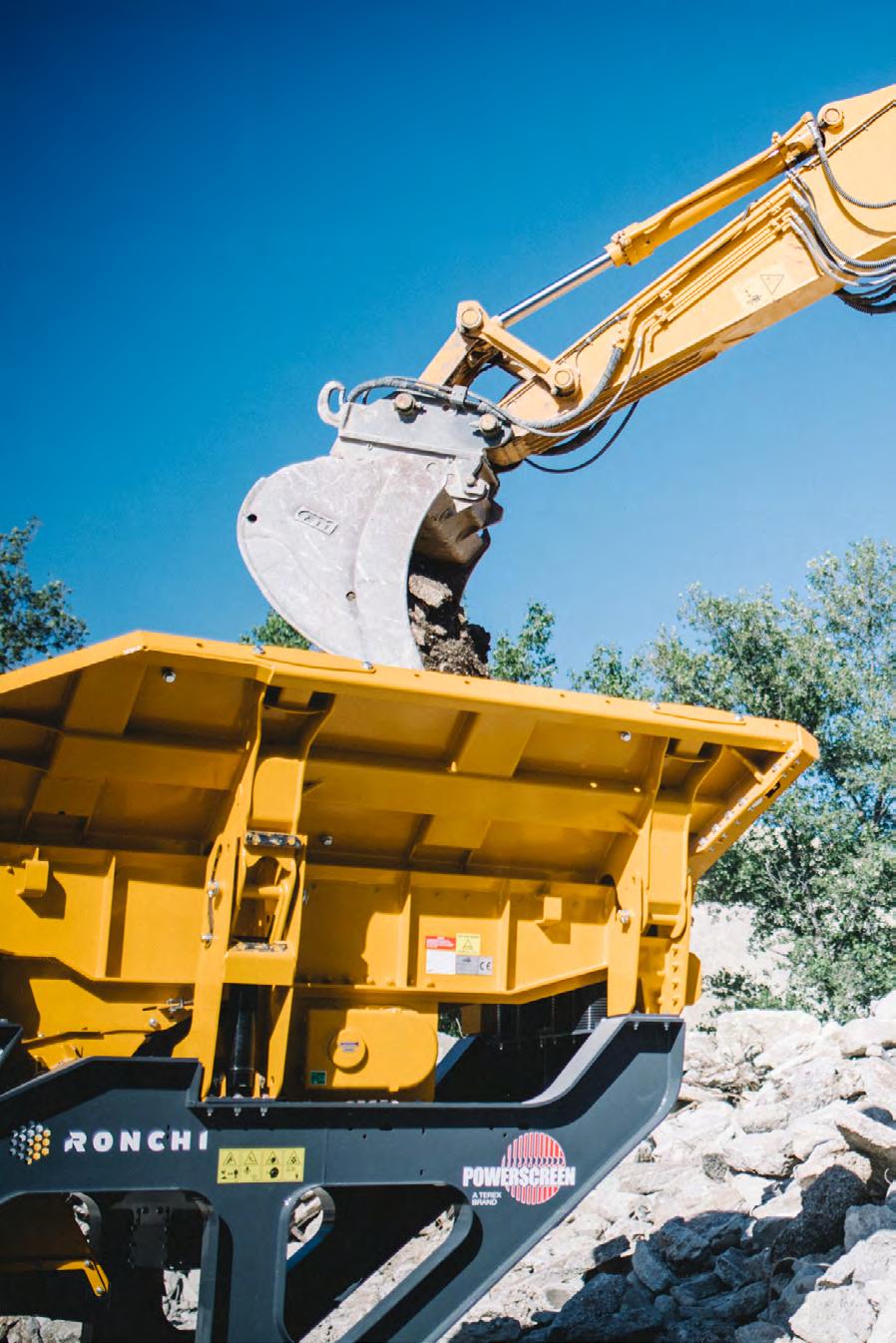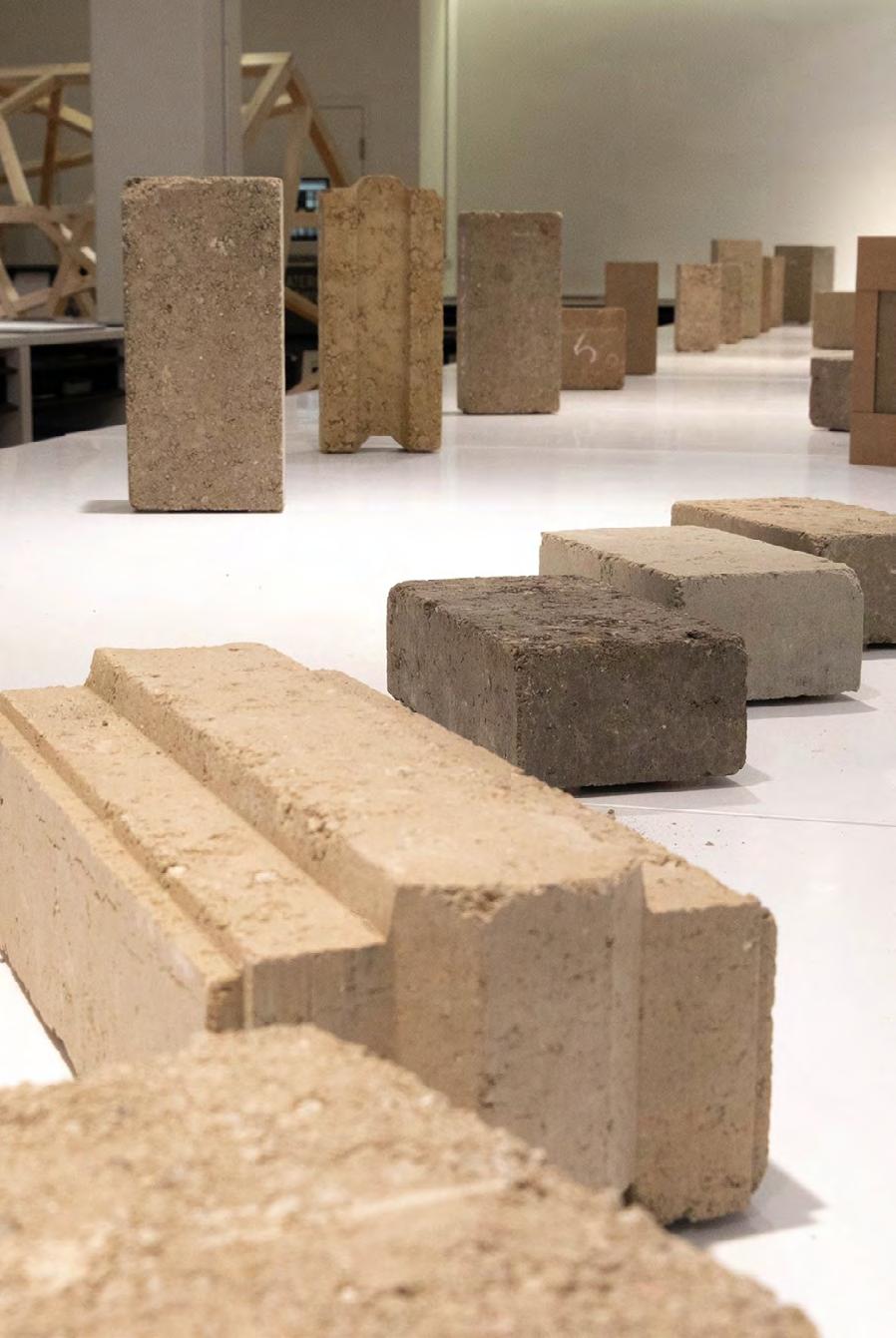
5 minute read
OUTLOOK
OUTLOOK
In response to the issues discussed above and to meet more ambitious circularity objectives, other countries have developed innovative, accessible initiatives.
Advertisement
Modular buildings designed to encourage repurposing, reconditioning and re-use
To reduce the quantity of raw materials used to construct a building and limit the waste generated by future renovations of that building, more and more research is focusing on building reversibility34,35. A reversible building must ensure that future renovations generate little or no waste and must be easy to convert to another use, for example from commercial to residential. This practice also involves giving preference to re-usable materials wherever possible. Several reversible buildings have been constructed in recent years. In Brussels, a timber building built in 2018 for use as offices was dismantled and rebuilt in 2019 to serve as commercial premises, and it is due to be transformed into an acoustics laboratory in the near future36. Another building, a seven-storey office block in the Confluence district of Lyon, France, was designed from the start to be easily transformable into a residential block in the future. The size of the windows, the balconies and even the height of the storeys were designed with both types of use in mind, and the project took into account the planned reclassification of the nearby motorway as an urban boulevard37. At a bigger scale, Park 20|20 in Amsterdam is a circular economy business district in which the buildings are reversible and quickly and easily able to accommodate different business requirements (offices, hotels, restaurants, etc.). The buildings have been designed to be dismantlable, with each different material used logged for easy identification. Park 20|20 is currently home to the international headquarters of several major corporations, and has received a large number of enquiries about opening shops there.
Conceiving the circular economy at district level
In 2015, Amsterdam was the first city in the world to evaluate the quantitative potential of the circular economy. Since then, several projects have seen the light of day, including the circular economy district of Schoonschip, completed in 2019. Located in a family-friendly residential quarter in the north of the city, close to the full range of amenities, the district is made up of floating homes built of timber and other recycled materials. Heat pumps use the water in the canal for domestic heating, and water is also heated by solar collectors and photovoltaic panels that generate electricity which is stored in batteries, with the surplus being fed into the urban grid. The water treatment system is also innovative: the grey water is channelled into the conventional system, while the sewage waste is recycled into fertiliser and used to generate biogas. Most of the dwellings also have a vegetable garden on the roof. From the start, this has been designed as a circular economy district, from construction to the end of its useful life.
IGOR USTINOV Co-founder of UHCS
Like in nature, imagine and learn to regenerate our activities to better adapt the world to the impacts of our unavoidable necessities.
Spotlight on …
RONCHI SA
For more than a century, Ronchi SA has specialised in processing and distributing aggregates. An environmentally conscious company committed to sustainable development, Ronchi SA recovers demolition materials and reprocesses them to make recycled materials such as concrete aggregate and milled asphalt. To reduce its greenhouse gas emissions, the company makes use of materials sourced only from around the region and in 2016 opened its own road/rail interchange facility capable of receiving up to 1,200 tonnes of gravel and sand and dispatching 700 tonnes of earth daily. This reduces the harmful effects of road transport and the climate impact of its materials.
Spotlight on …

TERRABLOC
This Geneva-based company has brought back into fashion the age-old technology of making bricks out of earth. The blocks Terrabloc makes are not only environmentally friendly, they also improve the building’s interior comfort by naturally regulating humidity. One to watch... see the Terrabloc company profile in the second part of this report.
What about timber constructions?
Every year, Switzerland uses around ten million cubic metres of timber38, the equivalent volume of 4,000 Olympic-sized swimming pools. Since 2015, the use of timber has been permitted in every type of construction39 and in 2019 it accounted for approximately 14% of the market40. However, Switzerland’s forests are underexploited for construction materials because production costs are too high. As a result, timber is often imported from Germany or Austria41 .
But in terms of developing the circular economy and reducing the construction industry’s environmental impact, timber is the ideal solution. It’s a natural material that stores CO2, is renewable and can be recycled at every transformation stage. Today, building with timber makes it possible to build more quickly, increase the net floor area of a given building footprint by 8%, naturally regulate the building’s humidity levels, reduce heat loss by 30% by limiting thermal bridges, and store – naturally – CO2 (1 m3 of timber equates to 1 tonne of stored CO2 42,43). Building with timber also avoids using concrete of course, and concrete production consumes primary raw materials and emits large quantities of CO2 44. And despite what the naysayers claim, timber buildings can stand the test of time. The oldest timber house in Europe is in... Switzerland! Built in 1176 in what is now the village of Steinen (canton of Schwytz), it was dismantled in 2017 to make way for an apartment block and rebuilt in Sattel (canton of Schwytz). And timber has lofty ambitions too: the Mjøstårnet tower, built in 2019 in Brumunddal, Norway, entirely of timber, is 85.4 metres high, making it the highest timber building in the world to date45 .
Timber therefore has a big future and – who knows? – could become the go-to building material in the 21st century, as concrete was in the 20th century.
DAVID CRETTENAND Director, RedElec Technologie SA and founder of the 1PEC initiative
The circular economy encourages us to collaborate and requires skillsharing so that each partner is able to capture value from it.






